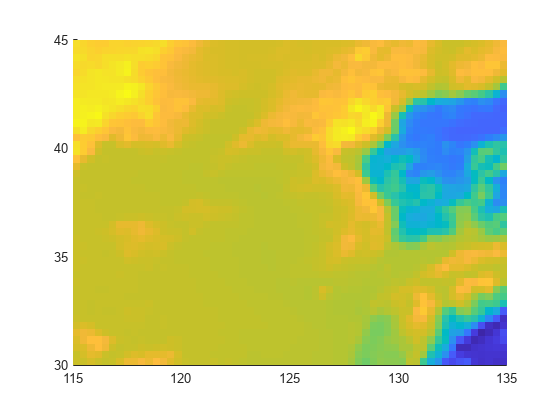georesize
Resize geographic raster
Syntax
Description
Examples
Input Arguments
Output Arguments
Tips
To resize a raster in planar map coordinates, use the
mapresizefunction.Resample a raster by using the
georesamplefunction. Raster resampling is useful for matching the resolutions of related rasters.
Version History
Introduced in R2019a

